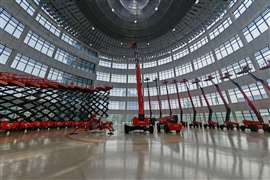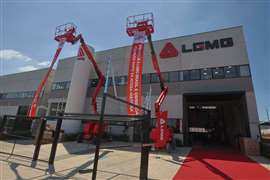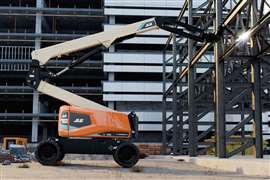Top recruitment tips for rental companies
07 March 2022
Over the last two years, the American Rental Association (ARA) has introduced a number of initiatives geared toward combatting the ever-growing labor shortage. Keith Pearson, ARA’s director of rental workforce development, recently sat down with Lindsey Anderson to discuss benefits when working in rental, how rental companies can attract new talent and what the ARA is working on to lend a hand to companies that need all the hands they can get.
The ARA has introduced a number of initiatives to help rental companies with recruitment and retaining employees. Can you talk to me about these and what the benefits are for the rental industry?
 Keith Pearson
Keith Pearson
Keith Pearson: One of our biggest initiatives was the launch of the ARA Job Board in 2021. And the reason we did that is we had our annual trade show in February 2020 and right at the end of that is when Covid hit. We had been postured to go out and do a lot of recruitment with a lot of tech and trade schools, but due to COVID, we could not go out. So, we pivoted and we moved to putting our resources into a consolidated job board for the rental industry. There was nothing else out there previously.
The job board has the look and feel of ‘rental.’ Initially we started with a number of beta testers, which included some of our biggest members. In April of 2021, it was finally launched and out to members. We started with about 2,000 jobs on the job board back in April and we have over 4,000 jobs on there as of [late December 2021.]
An aspect that sets the ARA Job Board apart is its ability to pull job postings from the member websites. There’s no need to upload job postings to multiple sites when the ARA Job Board fetches and uploads new jobs each night. Similarly, if a posting is removed from the member website, it will be removed from the ARA Job Board.
The ARA has also invested in advertising to increase awareness of the ARA Job Board and drive potential applicants to the website where they will find more than jobs. The Job Board also includes personalized job matching that recommends positions based on search history, built-in screening for improved candidate selection and options for priority postings.
When thinking about technicians, were you previously targeting trade schools or apprenticeship programs?
Pearson: We were - up the 2020 show. We were developing tech and trade school listings all across the United States because we knew our members needed drivers and technicians and such.
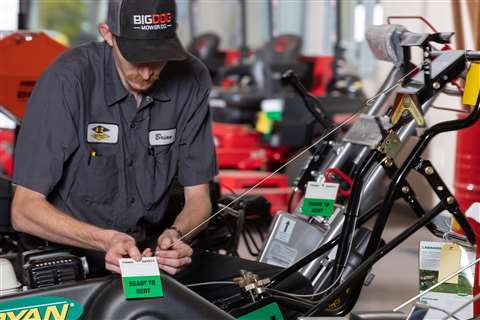
We were postured and going out to a number of schools doing presentations to those tech students about the benefits of careers in rental, making sure that they were aware of what we had for those opportunities and why it was beneficial for them to take a look at it.
And what are those benefits of a career in rental?
Pearson: I would say the explosive growth that we have had since 2009, back when that recession hit. From an employee perspective, one of the things I think is ideal is it’s almost able to withstand a recession, you know, so you don’t have to worry about being laid off per se. Now I’ll say that as a caveat, you know, for the equipment side of things, that’s a true statement on the tool and equipment side of things.
Another benefit is that the ARA has over 6,000 members within our association with over 11,000 store locations across the U.S. and North America.
If an employee’s not satisfied with one company or location, they have multiple opportunities to select from. They can go anywhere with that. If they let another employer know that they’ve been with a rental company and they’re looking to make a change, whether it be geographically or a different job opportunity, chances are, they’re going to have plenty of choices out there.
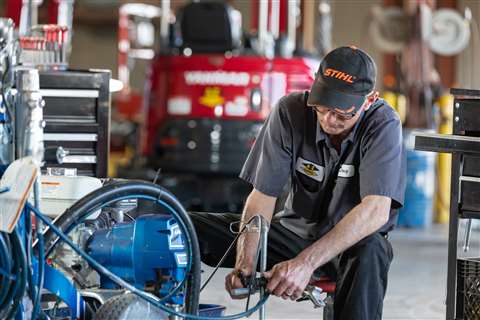
How do you see technology helping to bring in people who might have the old-school mentality of the industry. Is it changing mindsets at all?
Pearson: I think technology is one of the biggest things changing the industry. You see kids coming out of high schools who work with career counselors, and we want to tell them, ‘Hey, this is a $65 billion industry. It’s not small. We need to take a look at educating those career counselors and educators at the high school level, and even at the tech levels to let them know that rental is here, it’s here to stay and it’s growing. This is an industry that you might want to get on board with and start looking at gearing your education towards some of these career opportunities in rental.
The schools that we’re working with, the post-secondary programs we’re working with, are already looking at going into virtual reality to try to develop non-hands-on curriculum for things, like, diesel technology. You’re still going to have to turn a bolt here or there with a wrench, but we can simulate that a number of times using VR. That way the student gets an idea of how it looks and feels, you know, in a virtual setting and then can go to the real setting.
For those in equipment rental specifically, what benefits can they market?
Pearson: I’ve been seeing companies offer tuition repayment programs. So, if technicians are going into post-secondary programs, or getting their associates degree, some companies are paying for the schooling for them, which is great. Other companies are offering, as an example, a toolbox with all the tools needed to do their jobs. But, if you can get someone out of high school and say, ‘We will pay for your education for the next two to three years, but you work for us for two to three years after that,’ that goes a long way.
It also depends, though, on what part of the United States you’re in. I’ve had some post-secondary programs say that some of their students come out making $25 to $30 an hour. Others are making $15 to $20 an hour, but it depends on that geographic area that you’re in at that point in time.
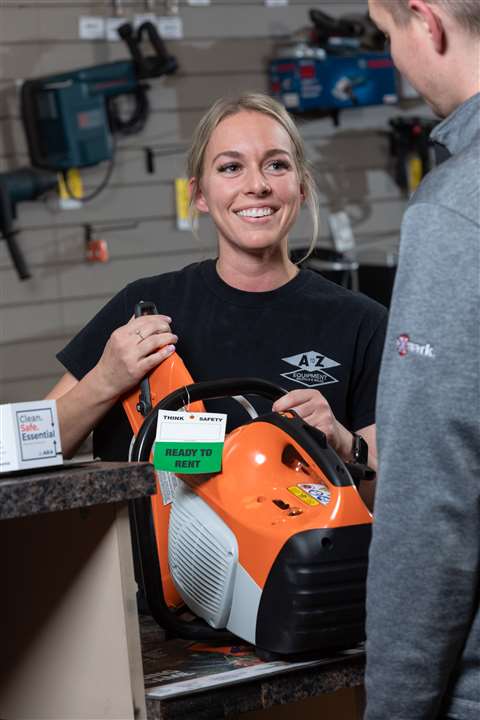
Benefits, of course, you know, the medical, dental, vision, 401k, those things are all important – especially to somebody in my age demographic, but the younger students out there who are just graduating, coming into the industry, I don’t think they see medical as being as important as other things, which could be tuition repayment, tools or stipends.
What about diversification within the workforce? Does it help with recruitment?
Pearson: The ARA has a number of initiatives to go along with that. We do have a program called Women in Rental, we have a Young Professionals Network, we are partnering with diversity job boards to attract a broad candidate pool within different geographical, targeted areas.
How do you see the labor shortage playing out this year? Will it get worse?
Pearson: From our perspective, it’s a multi-pronged approach with short-, medium- and long-range planning on how we start getting these pipelines of candidates coming in. We want to get those students educated about careers in rental but also talk to the career counselors at high schools about why students should look at this as a career opportunity, and talk to those shop class instructors about how we can better help those folks coming out of those classes get into the trades. We want to educate them so they can get set up and be successful.
“Get out to your schools. Get out to your tech and trade programs. Get out to your traditional colleges, especially those that align with your company. Do presentations, invite students on field trips to your location to see what it looks like. Get to know who your instructors are at those high schools and at those post-secondary level programs. Be on advisory committees. Be in their programs and understand what they’re doing and help them to understand what your needs are in the local communities.”-Keith Pearson, ARA’s director of rental workforce development |
STAY CONNECTED



Receive the information you need when you need it through our world-leading magazines, newsletters and daily briefings.
CONNECT WITH THE TEAM










